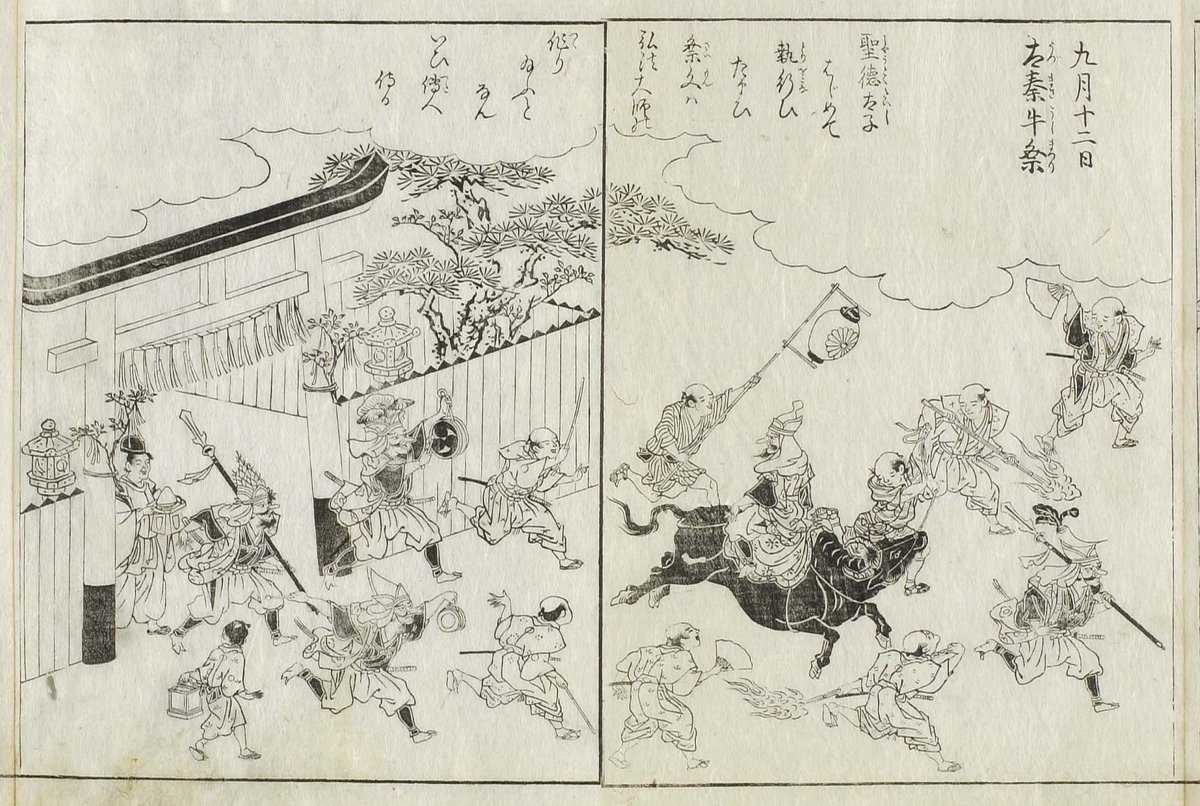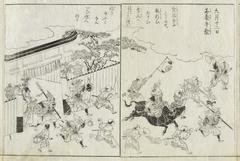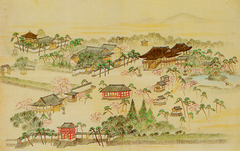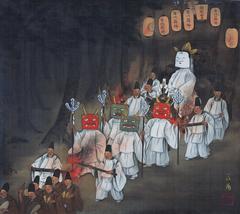
Kōryū-ji Visiting Hours, Tickets, and Guide to Kyoto’s Historical Sites
Date: 14/06/2025
Introduction
Kōryū-ji (広隆寺), located in Kyoto’s historic Uzumasa district, is revered as the city’s oldest Buddhist temple, with origins dating back to 603 CE. Founded by Hata no Kawakatsu after receiving a sacred statue from Prince Shōtoku, Kōryū-ji stands as a testament to the introduction and flourishing of Buddhism in Japan. Over its 1,400-year history, the temple has witnessed periods of destruction and restoration, and today it continues to serve as an active center of worship, cultural preservation, and community activity. A visit to Kōryū-ji offers a rare opportunity to explore Japan’s early Buddhist art, Heian-period architecture, and living traditions, all within tranquil temple gardens.
This comprehensive guide provides essential information on Kōryū-ji’s history, religious and artistic significance, practical visitor details, and tips for a memorable experience exploring one of Kyoto’s most storied historical sites. (Japanesewiki.com, Lonely Planet, Kyototravel.info, Japan.travel)
Table of Contents
- Introduction
- History and Founding
- Architectural and Artistic Highlights
- Religious Significance and Syncretism
- Festivals and Community Life
- Practical Visitor Information
- Frequently Asked Questions (FAQ)
- Conclusion
- References and Further Reading
History and Founding
Kōryū-ji’s roots stretch to the early 7th century, when Hata no Kawakatsu, head of the Hata clan, established the temple after receiving a statue of Miroku Bosatsu (Maitreya Bodhisattva) from Prince Shōtoku (Japanesewiki.com; Wikipedia). The temple—originally called Hōkō-ji—was the clan’s family temple, reflecting their influential role in the development of Kyoto and the propagation of Buddhism in Japan.
The Asuka-period statue gifted by Prince Shōtoku anchors Kōryū-ji’s spiritual heritage and is among the oldest extant wooden Buddhist images in the country (Wa-pedia). Kōryū-ji predates Kyoto’s establishment as the imperial capital and is one of the seven temples closely associated with Prince Shōtoku’s efforts to introduce Buddhism to Japan.
Architectural and Artistic Highlights
Throughout its history, Kōryū-ji has endured fires and reconstruction, losing many original structures but preserving key treasures:
- Kōdō (Lecture Hall): Rebuilt in 1165, the Kōdō is one of Kyoto’s oldest surviving Heian-period buildings and is an Important Cultural Property (Kyototravel.info; Japan.travel).
- Keigū-in Hondo: Dating from 1251, this hall is also a designated National Treasure.
- Reihōden (Treasure Hall): Houses an exceptional collection of Buddhist art and relics, including the celebrated wooden Miroku Bosatsu statue, the first object officially recognized as a National Treasure by the Japanese government (Japan.travel; Kyoto-Kanko).
- Temple Gardens: The serene grounds feature mature cherry trees, seasonal flora, mossy paths, and stone lanterns, offering peaceful spots for reflection.
Kōryū-ji’s statues and iconography provide direct insight into early Japanese Buddhist aesthetics and the evolution of temple art and architecture (Japan Experience).
Religious Significance and Syncretism
Kōryū-ji is affiliated with the Omuro branch of the Shingon sect and exemplifies shinbutsu-shūgō, the blending of Buddhism and Shinto that characterizes much of Japanese spirituality (Maithri.com). Visitors will notice Shinto elements, such as torii gates and the veneration of local kami, interwoven with Buddhist rituals and iconography.
The temple’s enduring spiritual role is reinforced by its historic connection to Prince Shōtoku and its function as a center for esoteric Buddhist practice, memorial ceremonies, and community engagement. Kōryū-ji’s legacy includes the introduction of kagura, a sacred dance tradition attributed to its founder (Japan.travel).
Festivals and Community Life
Kōryū-ji remains an active site for worship and community events:
- Ushi-matsuri (Ox Festival): A unique annual festival held since 1012, attracting both locals and visitors (Japanesewiki.com).
- Denpō-e and Hokke-e Ceremonies: Traditional Buddhist observances established by imperial decree.
- Seasonal Observances: The temple participates in citywide events, such as Kyoto’s Summer and Winter Special Openings, offering rare access to temple treasures (Kyoto Travel).
Kōryū-ji’s community functions extend to educational programs, meditation sessions, and cultural workshops, all aimed at preserving and sharing Buddhist teachings.
Practical Visitor Information
Visiting Hours
- Open daily from 9:00 AM to 5:00 PM (last entry 4:30 PM).
- Hours may vary during special events or holidays; check the temple’s official website or the Kyoto tourism site for updates.
- Note: Some sources indicate closure on Wednesdays; confirm before your visit.
Tickets and Admission Fees
- General admission: 700 yen (adults)
- Students: 400 yen (with ID)
- Children under 12: Free
- Special exhibitions or access to the Treasure Hall may require an additional fee.
Accessibility
- The temple grounds are generally wheelchair accessible, with paved paths and ramps.
- Some historic buildings have steps or uneven surfaces; assistance is available if arranged in advance.
Getting There
- By Randen (Keifuku) Tram Line: Alight at Uzumasa-Kōryūji Station, a short walk to the temple.
- By Kyoto City Bus: Lines #73 and #75 stop nearby; other lines serve the Uzumasa area (Kyoto Transport Guide).
- By JR Sagano Line: Hanazono Station is about a 20-minute walk for those with a Japan Rail Pass.
- By Taxi or Bicycle: Ample taxi service and cycle-friendly roads; parking is limited.
Etiquette and Tips
- Dress modestly and remove hats/sunglasses indoors.
- Keep voices low and silence mobile devices.
- Photography is permitted in outdoor areas but usually prohibited inside main halls and the Treasure Hall.
- Respect any areas closed for ceremonies or maintenance.
- Carry cash for tickets and donations; credit cards may not be accepted.
Nearby Attractions
- Kaikonoyashiro Shrine: Features a unique three-pillar torii gate.
- Toei Kyoto Studio Park: A samurai-era film set and theme park nearby.
- Arashiyama Bamboo Grove and Tenryū-ji Temple: Popular destinations easily accessed by train.
- Daiei-dori Shopping Street: Local shops and eateries.
Frequently Asked Questions (FAQ)
Q: What are Kōryū-ji’s opening hours?
A: 9:00 AM–5:00 PM daily (last entry 4:30 PM); check for holiday or event variations.
Q: How much is the admission fee?
A: 700 yen for adults, 400 yen for students, free for children under 12.
Q: Is the temple wheelchair accessible?
A: Most of the grounds are accessible; some older structures have steps.
Q: Are guided tours available?
A: English pamphlets and signage are available; guided tours may be possible through local agencies.
Q: Can I take photos?
A: Yes, in outdoor areas; no photography inside main halls or the Treasure Hall.
Q: How do I get there by public transport?
A: Randen Tram (Uzumasa-Kōryūji Station), Kyoto City Bus lines, or a short walk from Hanazono JR Station.
Q: When is the best time to visit?
A: Spring (cherry blossom) and autumn (foliage) are especially beautiful. Early mornings and weekdays are quieter.
Conclusion
Kōryū-ji offers an immersive experience into Kyoto’s ancient Buddhist heritage, combining historic architecture, world-class Buddhist art, and vibrant living traditions. With accessible visiting hours, reasonable ticket prices, and convenient public transport, it’s an ideal destination for both first-time visitors and seasoned travelers seeking a deeper understanding of Japanese culture. Respectful observance of temple etiquette will enhance your visit, and exploring nearby attractions can round out a full day in the Uzumasa area.
To enrich your journey, check for seasonal events, download the Audiala app for up-to-date travel tips, and explore more guides on Kyoto’s historical sites.
References and Further Reading
- Exploring Kōryū-ji: Kyoto’s Oldest Buddhist Temple – History, Visiting Hours, Tickets & Travel Tips, 2025 (Japanesewiki.com)
- Kōryū-ji Visiting Hours, Tickets, and Cultural Significance in Kyoto, 2025 (Lonely Planet)
- Visiting Kōryū-Ji Temple in Kyoto: Hours, Tickets & Historical Guide, 2025 (Kyoto-Kanko)
- Kōryū-ji Visiting Hours, Tickets, and Travel Tips for Kyoto’s Historic Temple, 2025 (Kyoto Travel)
- Kōryū-ji’s Place in Japanese Buddhism and Syncretism, 2025 (Japan Experience)
- Kōryū-ji Temple and Kyoto Travel, 2025 (Kyototravel.info)
- Japanese Tourism Official Site, 2025 (Japan.travel)
- Kyoto Travel Special Openings, 2025 (Kyoto Travel)













































































